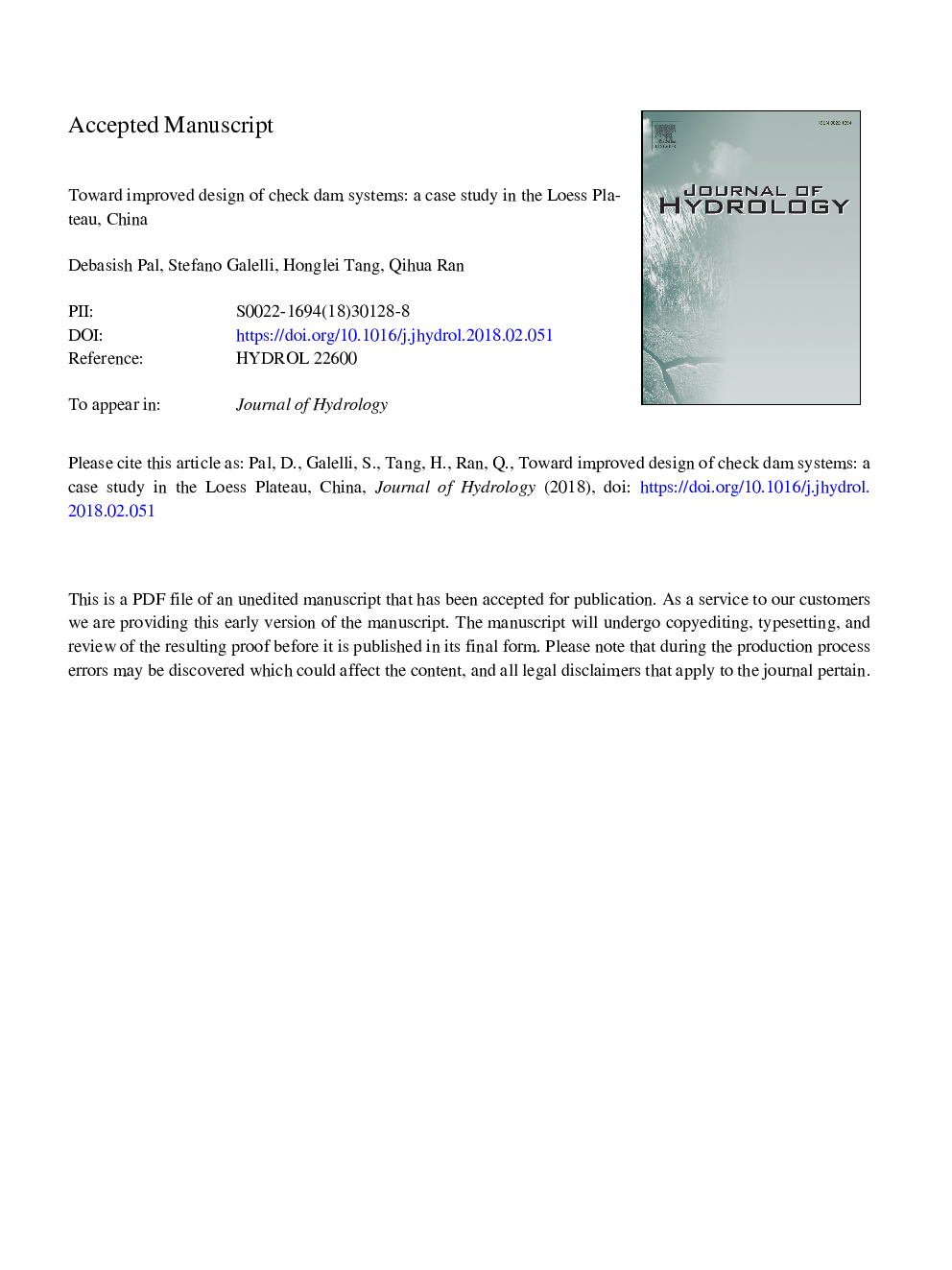| Article ID | Journal | Published Year | Pages | File Type |
|---|---|---|---|---|
| 8894940 | Journal of Hydrology | 2018 | 42 Pages |
Abstract
Check dams are one of the most common strategies for controlling sediment transport in erosion prone areas, along with soil and water conservation measures. However, existing mathematical models that simulate sediment production and delivery are often unable to simulate how the storage capacity of check dams varies with time. To explicitly account for this process-and to support the design of check dam systems-we developed a modelling framework consisting of two components, namely (1) the spatially distributed Soil Erosion and Sediment Delivery Model (WaTEM/SEDEM), and (2) a network-based model of check dam storage dynamics. The two models are run sequentially, with the second model receiving the initial sediment input to check dams from WaTEM/SEDEM. The framework is first applied to Shejiagou catchment, a 4.26â¯km2 area located in the Loess Plateau, China, where we study the effect of the existing check dam system on sediment dynamics. Results show that the deployment of check dams altered significantly the sediment delivery ratio of the catchment. Furthermore, the network-based model reveals a large variability in the life expectancy of check dams and abrupt changes in their filling rates. The application of the framework to six alternative check dam deployment scenarios is then used to illustrate its usefulness for planning purposes, and to derive some insights on the effect of key decision variables, such as the number, size, and site location of check dams. Simulation results suggest that better performance-in terms of life expectancy and sediment delivery ratio-could have been achieved with an alternative deployment strategy.
Related Topics
Physical Sciences and Engineering
Earth and Planetary Sciences
Earth-Surface Processes
Authors
Debasish Pal, Stefano Galelli, Honglei Tang, Qihua Ran,
